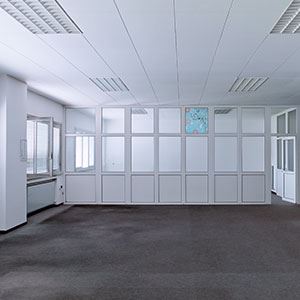 With almost every lease, you the tenant have the responsibility of returning your old office space to the condition specified in your contract. Regardless of the terms outlined, you know you have a fair amount of work lying ahead of you. What are some tips that will make the process more successful for you? Check out this list to find some of the most important:
With almost every lease, you the tenant have the responsibility of returning your old office space to the condition specified in your contract. Regardless of the terms outlined, you know you have a fair amount of work lying ahead of you. What are some tips that will make the process more successful for you? Check out this list to find some of the most important:
1. Verify the Required Condition of the Property
To make sure you meet the conditions of your contract, meet with the property managers first. Get it on paper and from their lips. My Moving Reviews recommends this tip strongly.
2. Audit Your Old Furniture Assets
Can you use it? Should it be recycled? Does it make more sense to upgrade your furniture so you can be more efficient and productive? Take a thorough inventory of your current furniture assets. Then, meet and make decisions based on your budget, employee needs, and the size of your new facility.
3. Don’t Forget Your Cabling!
One Seattle company that refurbs office furniture reminds you that cable wrecking is typically required by most leases. Whether it’s for voice or data purposes, it all needs to go. Can you imagine how many thousands of feet (maybe miles) of cabling may be running through your office?
4. Clean Everything to an Impeccable Condition & Make Repairs
This is what My Moving Reviews continues on with later in its office decommission guide. The short checklist includes floor sweeping, wiping down your walls, and vacuuming your carpet. Do this for your warehouse and actual office space. Once that’s done, then it’s obvious where you need to make repairs. Tiles may need adding or replacing. Walls might have holes. Your ceiling may have some damage too. Whatever repairs you consider making, just make sure you follow the terms of your contract.
Remember, You Do It for Everyone’s Benefit!
For example, one auto parts manufacturer decided it was time to shut down a particular plant. It actually used the guidance of several consultants to do so. What could have went wrong without a carefully planned decommission? Quite a bit. Asbestos-containing materials could have harmed the environment, employees, and nearby citizens. PCBs and ozone-depleting substances could have been released into the air. Instead, the workers, residents, and environment were fully protected from any harm. The company didn’t experience any negative publicity that could have resulted. A potential disaster was thwarted with safe, proactive decommission planning. Think of what could go wrong with your company! Make sure you have a thorough checklist and knowledgeable experts in place to help with your decommission.
